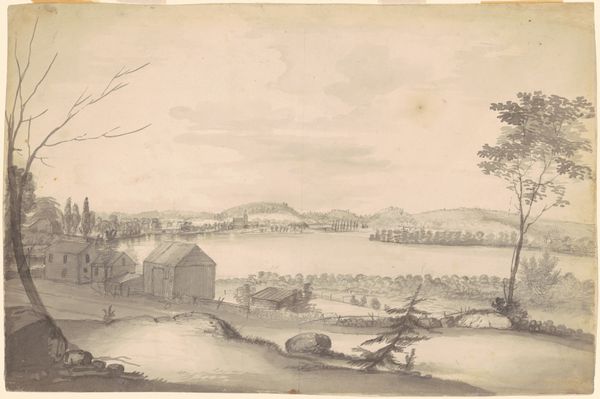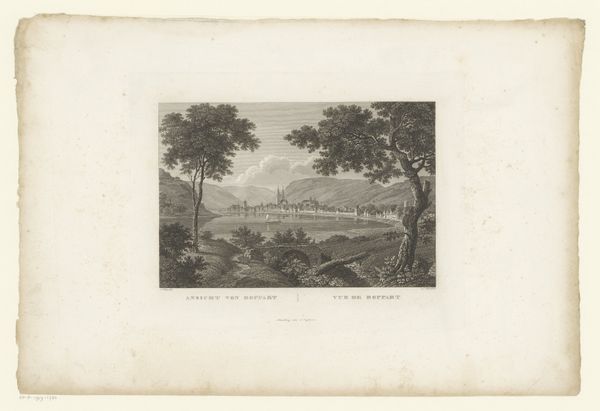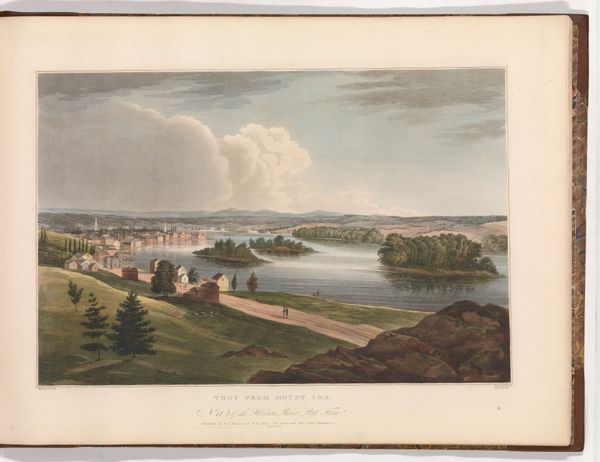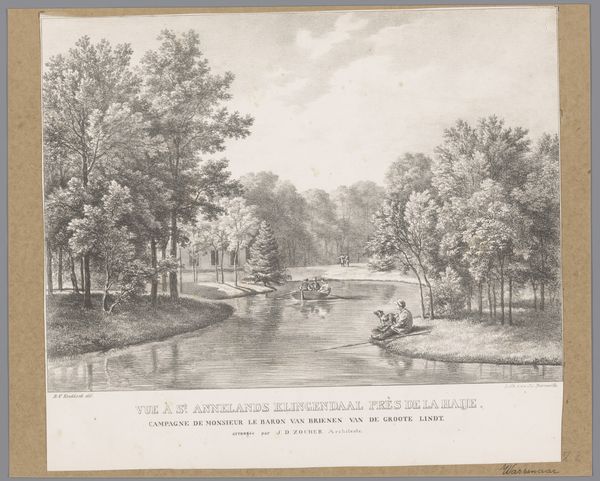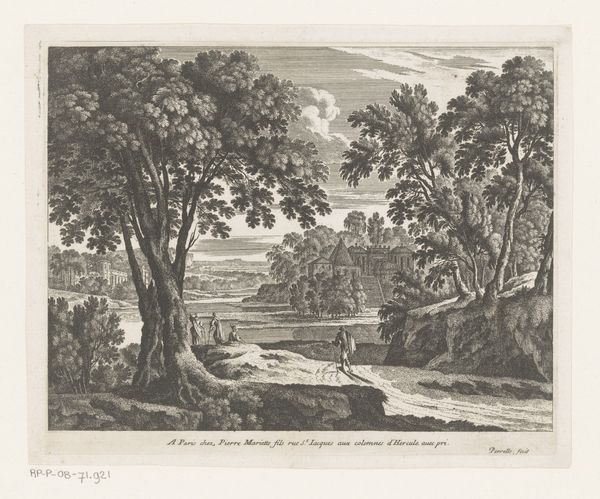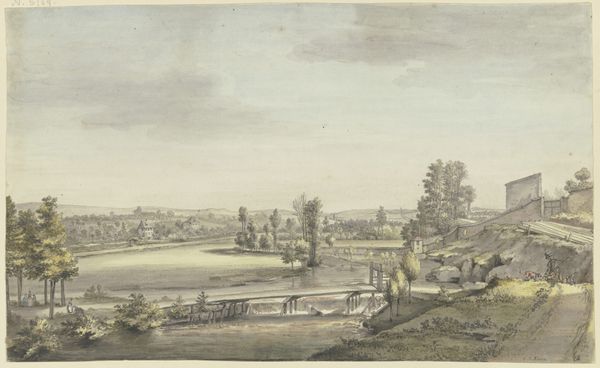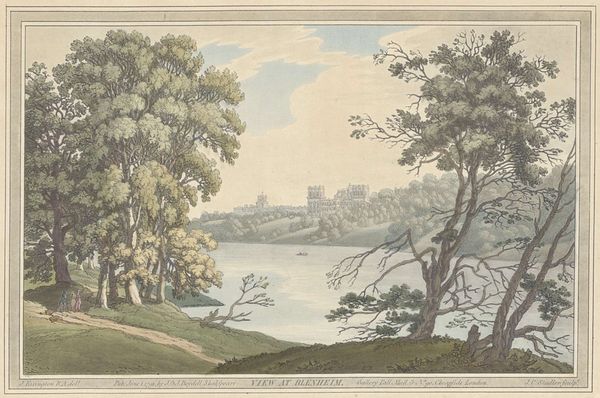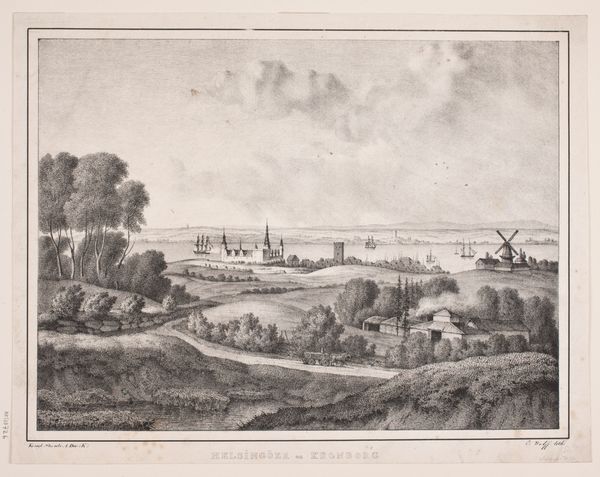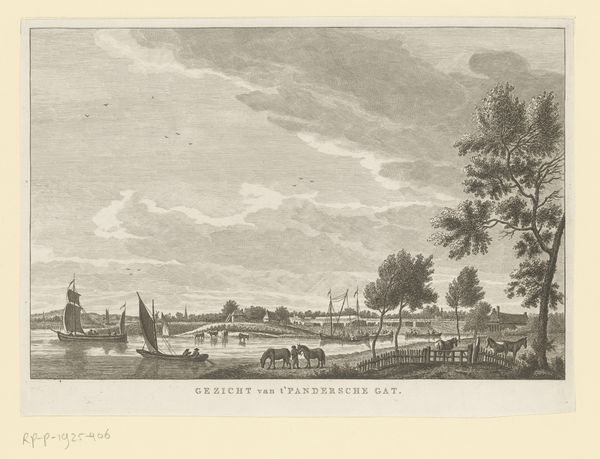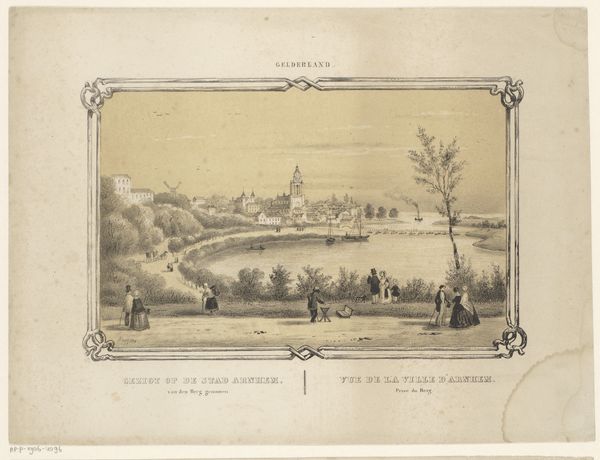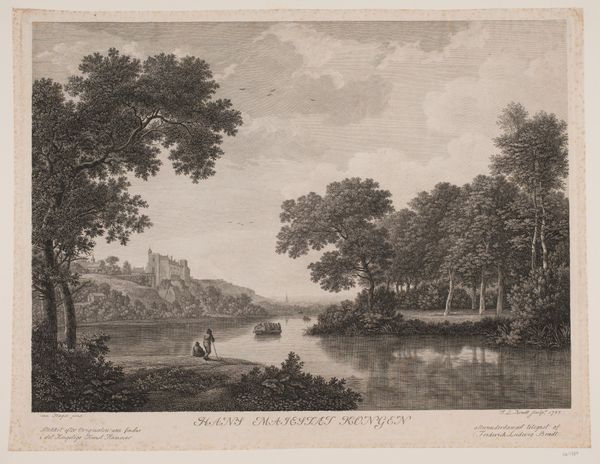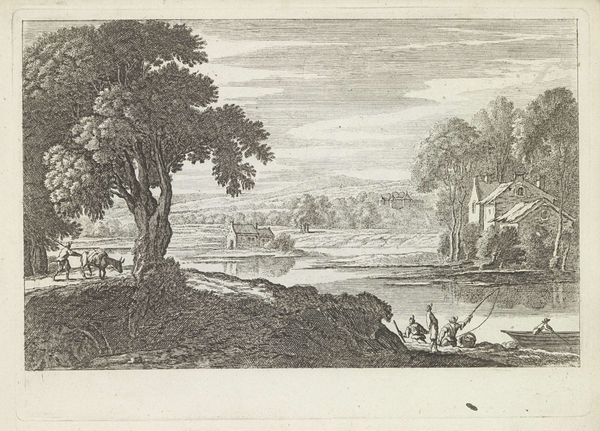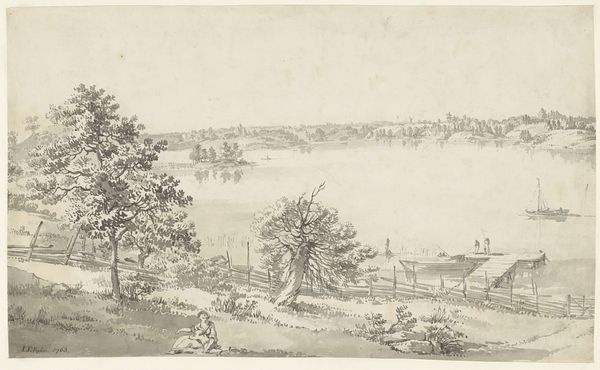
View in Central Park with Balcony Bridge and Oak Bridge (Valentine's Manual) 1861
0:00
0:00
drawing, print
#
drawing
# print
#
landscape
#
park
#
cityscape
Dimensions: plate: 6 x 7 11/16 in. (15.2 x 19.6 cm) sheet: 7 1/16 x 8 9/16 in. (17.9 x 21.8 cm)
Copyright: Public Domain
Editor: This is George Hayward's "View in Central Park with Balcony Bridge and Oak Bridge," an 1861 print held at The Met. I'm struck by the almost dreamlike quality of the scene. What strikes you most about its formal construction? Curator: I notice first the meticulous detail of the trees and rocks in the foreground. Consider the contrast of values that generate volume to your eye, while the distance seems compressed. Notice the artist’s sophisticated modulation of tone, effectively rendering the illusion of depth and space. Does this limited grayscale palette shape your viewing experience, and if so, how? Editor: It does create a sort of timeless feel. There’s something about the precise linework mixed with this smoky, almost hazy effect that suggests a memory rather than a real place. Curator: Precisely. Look how Hayward orchestrates light to direct the eye. Observe how the brightness around the bridge and water draws our attention. Note how the lines evoke both serenity and an artificial picturesque design. What might be the implication of using the visual strategies of landscape to document this constructed place? Editor: It gives the park a sense of established history, even though it was still relatively new at the time. It's as if Hayward is presenting Central Park as a timeless, almost inevitable, feature of the city. It also softens its artificiality, emphasizing its beauty. Curator: Yes, through a measured and precise formal construction, Hayward refines an idealized version of modern leisure, carefully manipulating the viewer's perception through composition and subtle tonal shifts. Editor: I see it now. I didn’t realize how much the seemingly simple choice of values could shape the entire feel of the piece. Curator: Indeed. It highlights how crucial it is to focus on the formal elements, in this instance the contrast of tones, and how that can completely transform a piece.
Comments
No comments
Be the first to comment and join the conversation on the ultimate creative platform.

